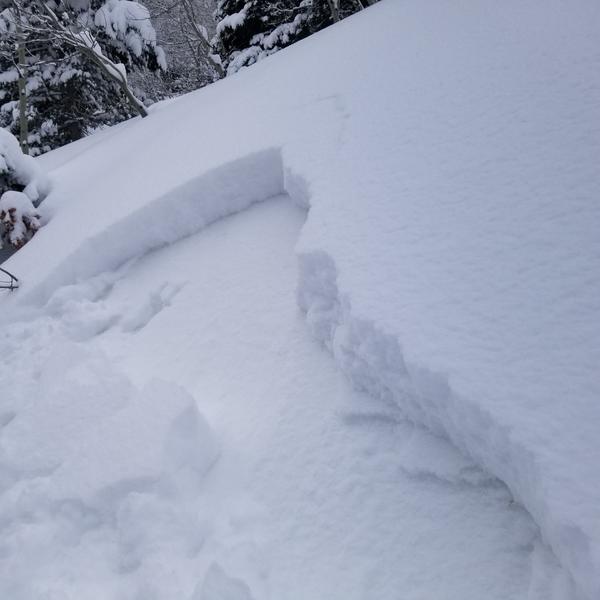Observer Name
Pickle, Rick
Observation Date
Wednesday, February 23, 2022
Avalanche Date
Wednesday, February 23, 2022
Region
Provo » Provo Canyon » Timpanogos
Location Name or Route
North Timp, Cold Fusion area
Elevation
11,300'
Aspect
North
Trigger
Natural
Depth
Unknown
Width
1,500'
Comments
We skied the large bowl beneath the prominent cliff band / amphitheater on the way to the base of cold fusion. We ventured into the zone with the intention to ski Cold Fusion (CF), however, under the impression we likely would not be able to ski the line given storm snow and wind slab issues. The overhead danger in CF was a notable deterrent.
As we travelled towards the base of CF we made ski cuts on low-consequence test slopes on North, NE, and NW slopes. We noted reactivity of the new snow at the interface with the new snow on all aspects on all tests slopes. The results differed in nature however. NE and NW slopes exhibited more reactive dry loose avalanches on top of a shallow crust with facets on top and below the crust. On these test slopes, we noticed a propensity for propagation as noted by some shooting cracks, fracturing outward from the area of force, and several whumpfs. On one test slope of a NW slope we had a remote trigger from our test ski cut that propagated roughly 50-60ft away. The nature of the avalanches were all dry loose with very little if any soft slab structure, with the notable exception of the remote trigger. Notably, we observed vastly different old snow surfaces ranging on our observed polar aspects. These different old snow surfaces were also very different in exposed-open terrain, mid-elevation (<9,000ft), and in forested, sheltered conditions. Crusts were either supportable, smooth, and firm, or varied widly in thickness across small spatial scales (<100ft) and not supportable at all (causing the hikers to punch and wallow through the facets beneath the crusts). Some crusts were >20cm thick characterized by large, melt forms, while others have faceted and were highly degraded.
After deciding to turn back from CF, we skied the near the bowl under the amphitheater on low-angle, shallow powder conditions. There however, we observed 4 separate large avalanches that descended from the top of North Timp and cascaded down the face of the amphitheater. These avalanches were natural triggers descending from the top of the peak and entraining large amounts of dry loose, storm snow. Two of the 4 were large enough to produce audible booms and all 4 exhibited large, fast moving powder clouds. Investigation of the debris from a safe distance indicated small depths of debris but were very wide and easily could have knocked somebody over and buried them in dry loose. There was no slabby nature of the debris but the form of snow from the start zone was unknown. Potential wind slab release but likely release of the storm snow on the old snow interface which gained momentum by the steep, 50 degree + slopes it traveled on. These large avalanches on a Destructive (D) scale were small, likely lower that 1.5, but on an Relative scale (R), potentially up to R3 based on the length of the over head area cleared out. These avalanched happened on the same slopes all within an hour of each other and entrained snow at the base of the cliffs in shallow, slow, short running dry loose avalanches (max 80 ft wide, max 200 ft long).
We anticipate as the new snow develops cohesive properties, the advent of soft slab avalanches on the buried facets or smooth crust bed surfaces, to have the ability to make larger, more well connected avalanches with increasing destructive potential.
Couldn't upload a video of the avalanches. My friend Rick'll do that in a separate observation.



Coordinates






